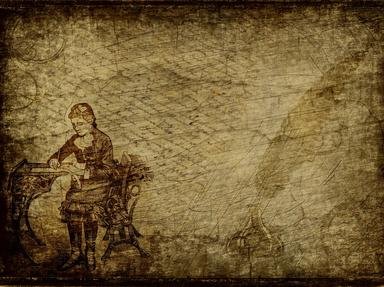Quiz Answer Key and Fun Facts
1. As mentioned, the novel covers the Spanish Civil War. Robert Jordan, the main character, functions in which of the following military positions?
2. Which of the following concepts are not addressed in the novel?
3. Near the end of the novel, Robert Jordan begins to observe every element of nature around him. This slowing down of time was addressed similarly in a man waiting for the end to come by which of the following short stories?
4. What approach did Robert use to soothe Maria (the cropped head Spanish girl he became infatuated with in his band)?
5. "In general, Pablo, besides being the intellectual leader of the band, was also the most abrasive and had the most tainted past."- Assess the validity of this statement.
6. Maria's cropped hair came as a result of it being cut maliciously by a group of Fascists. These same ones did away with her parents in front of her, and the entire experience traumatized her. This past experience is something she reveals to how many others members of the guerrilla band, except Robert Jordan?
7. Part of comprehending a literary work is knowing the literary elements associated with it. Which of the following events in "For Whom the Bell Tolls" is not part of rising action?
8. Which character in the novel experiences repetitive remorse about the violent actions associated with war, wanting to desperately atone for his actions?
9. When one thinks of Hemingway, he/she expects certian elements to appear. Which of the following, part of Hemingway's typical literary scheme, does NOT appear in "For Whom the Bell Tolls?"
10. Which of the following best illustrates Hemingway's use of dialogue in the novel?
11. Many characters in a story come to accept their fates. Which of the following is realized by Robert Jordan as the book progresses?
12. Pilar is a strong-willed individual. She doesn't fear speaking ill of her husband, Pablo, or telling people when they are wrong. She even assumes dictatorial command over the group. However, when it comes to observing Robert Jordan and Maria, what emotion becomes her downfall and burden?
13. Andres attempts to deliver a message to General Golz. When he arrives at his destination, he is belived to be a Fascist spy. Consequently, he has to go to great lengths to prove himself. Does he eventually ascertain his identity and convince it to the guards?
14. Knowing a novel front and back also requires being familiar with its geographic placement. For example, the story is set mostly in which mountain region? (Answer the statement without the word "mountains."
15. Ernest Hemingway's works are based on his real encounters and escapades. What was his job in Spain, during the Civil War? This made his descriptions of the nature of the region accurate.
16. Intermittently throughout the book, phrases in actual Spanish show up. This does not include translated Spanish, but actual Spanish words.
17. Gertrude Stein once said of Hemingway, Steinbeck, and Fitzgerald-
"You are all a lost generation." Which literary age is implied by Stein's quote and the period 1920-1945?
18. Pablo commonly tended horses. Of what hue was the horse he "collected" from the cavalry officer who visited Pablo's campsite?
19. Pablo developed a habit in the novel, which caused other characters to become revolted by him. Which habit or addiction was this?
20. The novel "For Whom the Bell Tolls" is primarily portrayed in which of the following points of view?
21. A promotional advertisement hypothetically made a character description- "This big-boned woman, besides assuming control of the group, took envy of the relationship between Robert Jordan and his girlfriend. Don't miss her." Which character?
22. At one point during a fluke snowstorm, Robert Jordan had to go find Anselmo. Why was Anselmo staying out in the snow and not attempting to make his way back to the shelter of the cave himself?
23. "For Whom the Bell Tolls" was published following the Spanish Civil War. By historical account, during which decade did the Spanish Civil War occur?
24. What is the primary function of flashbacks in the novel?
25. Pablo, during his earlier brutalities for the Republic, went to what inappropriate extreme, something seen even in earlier wars?
Source: Author
greg9570
This quiz was reviewed by FunTrivia editor
MotherGoose before going online.
Any errors found in FunTrivia content are routinely corrected through our feedback system.


